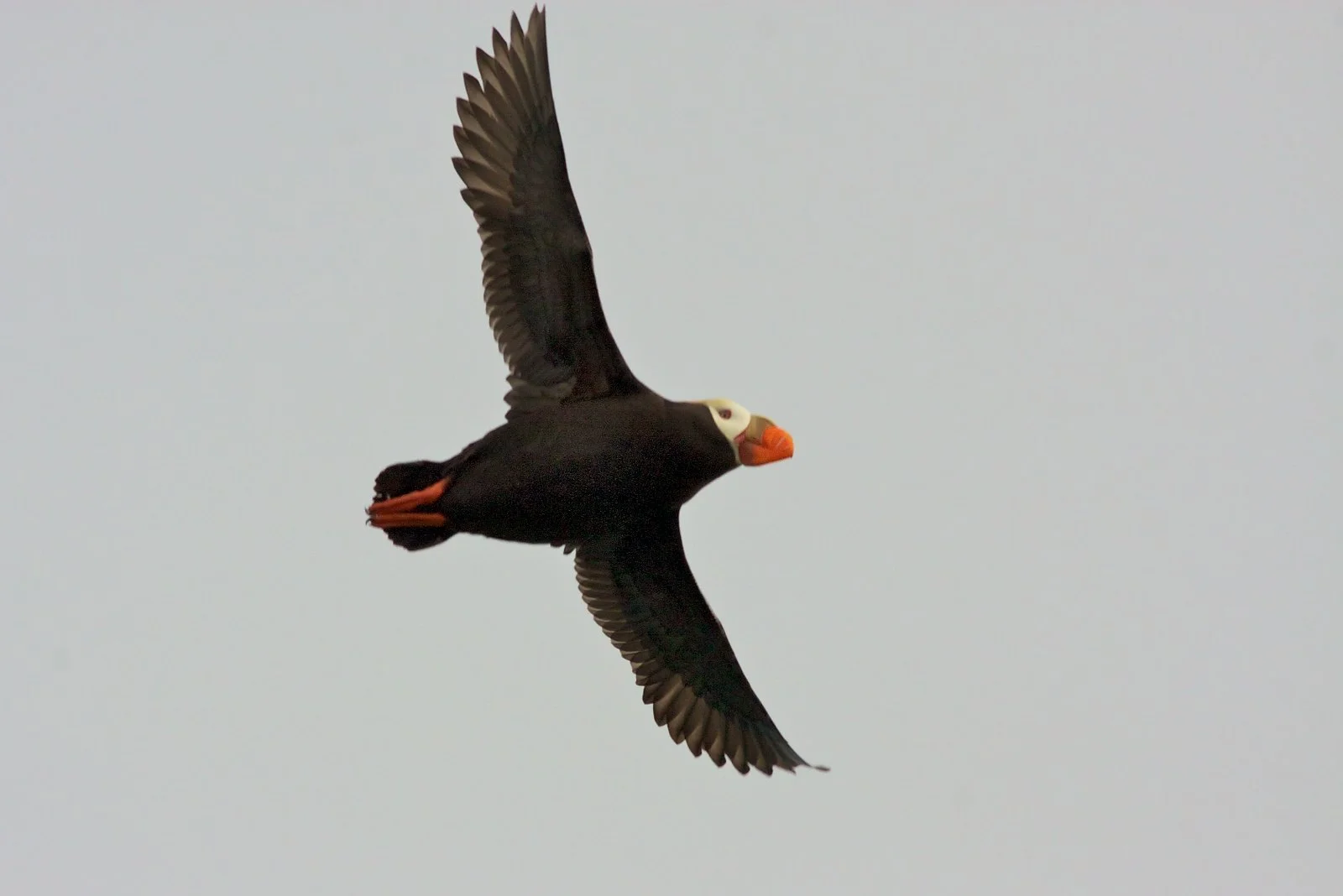Like flamingos and penguins, puffins are one of the few groups of birds that can rally both birders and non-birders to their aid. Indeed, word of endangered puffins is enough to cause concern among a wide array of puffin aficionados. However, is there a sincere reason for concern – are puffins endangered?
Well, I’m going to be getting to the bottom of this topic as I explore the status of the three puffin species within this article. I’ll tell you approximately how many puffins exist for each species while describing the threats that each faces. First, I’m going to quell some fears about the complete disappearance of puffins. So, are puffins extinct?
Table of Contents
Are Puffins Extinct?
If you’re tapped into the puffin information pipeline then you may have heard rumors about puffins going extinct. Before we discuss whether puffins are endangered, it is certainly appropriate to confirm that they aren’t extinct. Let’s settle this – are puffins extinct?
No, puffins are—fortunately—not extinct! Indeed, there are three extant (living) species of puffins: the Atlantic Puffin, the Horned Puffin, and the Tufted Puffin. Although these three types of puffins are alive and well, fossil records show that a fourth puffin once existed. That’s right, a bird now known as the Dow’s Puffin (Fratercula dowi) formerly lived alongside Tufted Puffins in the Pacific Ocean. Alas, this puffin went extinct for reasons unknown about 10,000 years ago.
Okay, so a puffin has not gone extinct in quite some time, but how about the remaining puffin species – are any of these puffin species at risk? Are puffins endangered?
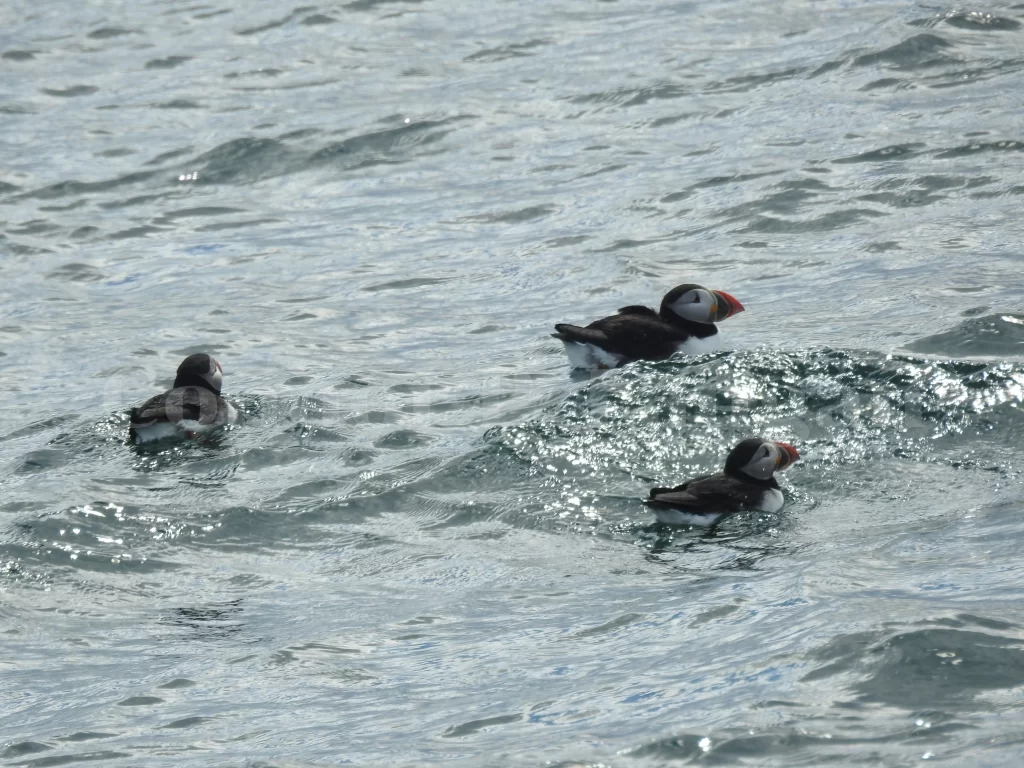
Are Puffins Endangered?
Although the three types of puffins don’t all overlap in their range, all are seabirds that have adapted to life in the oceans. This means that puffins are especially susceptible to changes in their food supplies and breeding habitats.
So, what is the status of the three extant puffin species? Are puffins endangered, or are the populations of these birds stable? Well, to answer that question, let’s take a look at each of the three puffin species individually to assess the status of its populations.
Atlantic Puffin
Atlantic Puffins are the most well-known puffins in the world. Indeed, when most picture a puffin, Atlantic Puffins will immediately come to mind. These charismatic seabirds are native to North America in places like Maine, but populations here are confined to small, predator-free islands. One would have to travel to Ireland if they wanted a chance to see Atlantic Puffins nesting on the mainland.
Now, you may have heard that Atlantic Puffin populations have been declining at alarming rates, but is this the reality – are puffins endangered? Well, despite being the most numerous puffin species with a global population of over 12 million, Atlantic Puffins have been listed as vulnerable by the International Union for the Conservation of Nature (IUCN).
Why are puffins endangered? Well, we’ll discuss specifics later in this article, but know that Atlantic Puffin populations have experienced sharp population declines in places such as Iceland and Scotland.
Horned Puffin
Horned Puffins look superficially similar to Atlantic Puffins, but their ranges do not overlap at all. These puffin species are native to British Columbia, Alaska, Russia, and Japan. Like other puffins, they come ashore to breed but spend the remainder of the year out at sea.
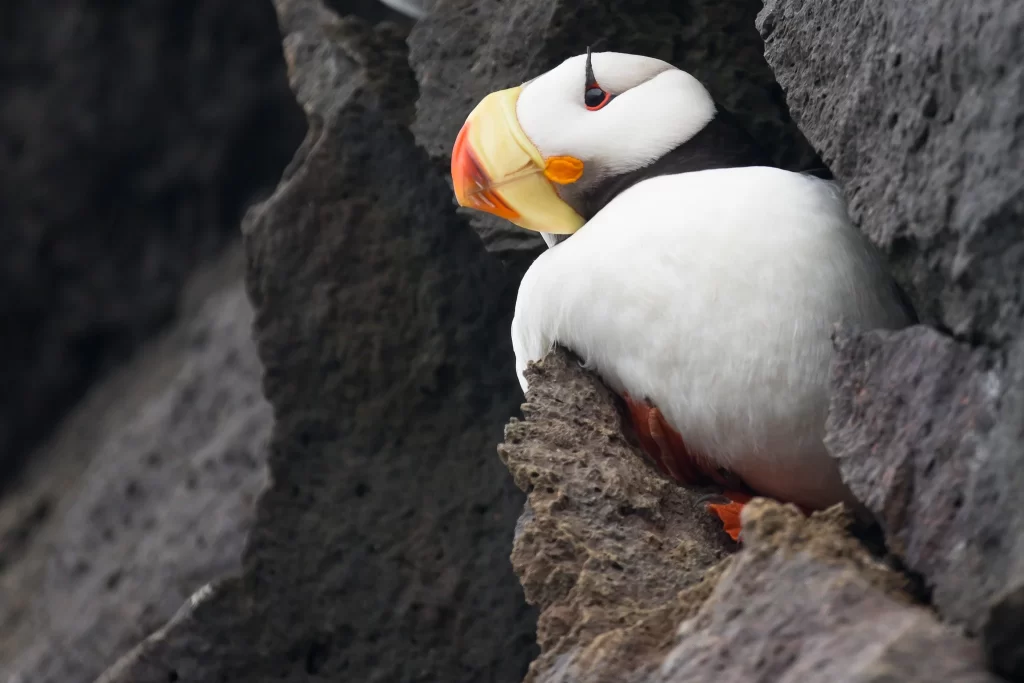
Horned Puffins have a global population that is estimated to number around 800,000 birds. This means that Horned Puffins have the smallest population of the three puffins. Most would assume that Horned Puffins are endangered considering that their population is smaller than the other two puffin species. However, is this true – are puffins endangered in this case?
No, Horned Puffins are not presently regarded as endangered by the IUCN. Therefore, they presented are listed as a species of least concern. Why? Well, Horned Puffin populations are not currently declining at a rate that would warrant them being listed as anything but a species of least concern. However, that assessment could certainly change in the coming decades.
Tufted Puffin
Tufted Puffins look considerably different than the other two types of puffins, but they possess the characteristic massive puffin bill. Tufted Puffins have the most southerly range of any puffin, breeding as far south as the Farallon Islands west of San Francisco. These birds also breed up the west coast of North America in addition to Russia and Japan.
Tufted Puffins have a global breeding population that numbers around 2.3 million birds. This may seem like plenty of puffins, but are puffins endangered when it comes to Tufted Puffins?
No, Tufted Puffins are not endangered, joining Horned Puffins with their least concern status. Despite being a species of least concern, Tufted Puffin populations are declining, with notable population reductions in the southern extent of their range.
Now that we’ve discussed the population status of all three puffin species, you may be curious about the threats that puffins face. Therefore, what are some threats to puffins?
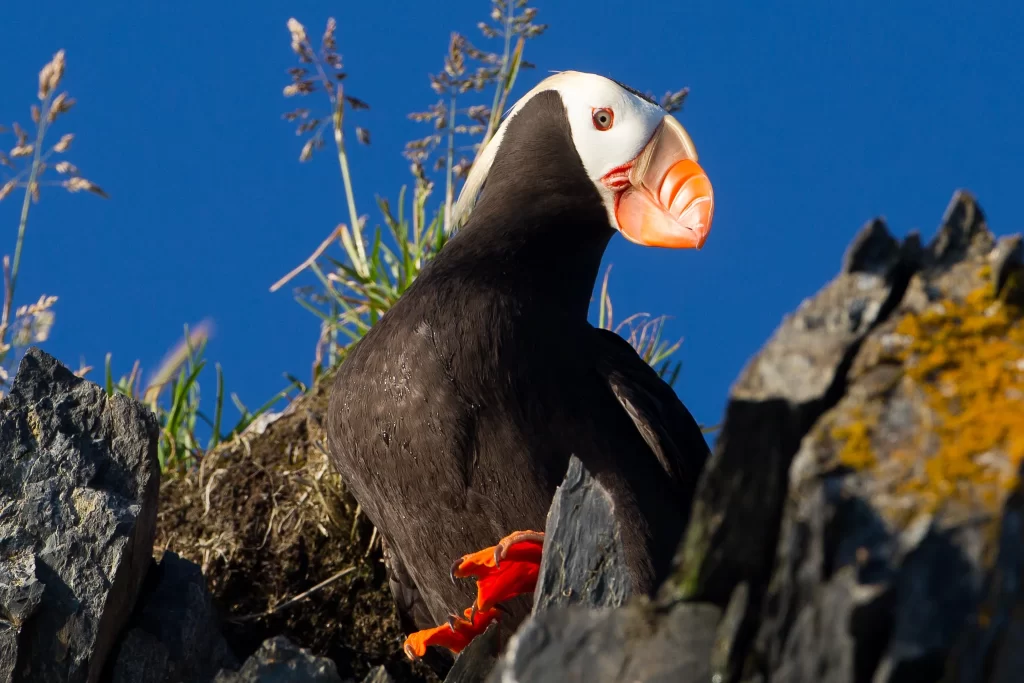
Threats To Puffins
Puffins clearly are subjected to a wide array of threats considering that all three puffin species are experiencing declines. So, what are some threats to puffins? Well, here is a quick list of some of the factors that are driving declines in puffin populations:
- Shifting prey distribution due to climate change
- Invasive predators
- Historic persecution from humans
- Accidental bycatch in fishing nets
- Plastic ingestion
- Rising seawater levels
As you can see, the threats to puffin populations are numerous and varied. Although all of the factors that I listed are harmful to puffins, climate change poses the biggest threat to puffins.
You see, eradicating invasive predators or making changes to fishing operations are changes that are much easier to implement compared to curbing planet-warming greenhouse gases. Of course, it is certainly possible to pass meaningful legislation to minimize the impact of fossil fuels, but such change is much harder to achieve compared to local changes that can help puffins.
So, how are puffins being impacted by climate change? For starters, warming ocean temperatures are causing the fish and other ocean life on which puffins depend to shift their ranges northward to find suitable water temperatures. In the Gulf of Maine, research has confirmed that Atlantic Puffins are being forced to shift their diets to eat more species that they traditionally did not consume. This is leading to a trend where puffin chicks weigh less at the time of fledging, making their survival less certain.
What Are Puffins Predators
Okay, so climate change is certainly detrimental to puffins, but how about predation pressure – are puffins endangered due to predators? What are puffins predators, anyway?
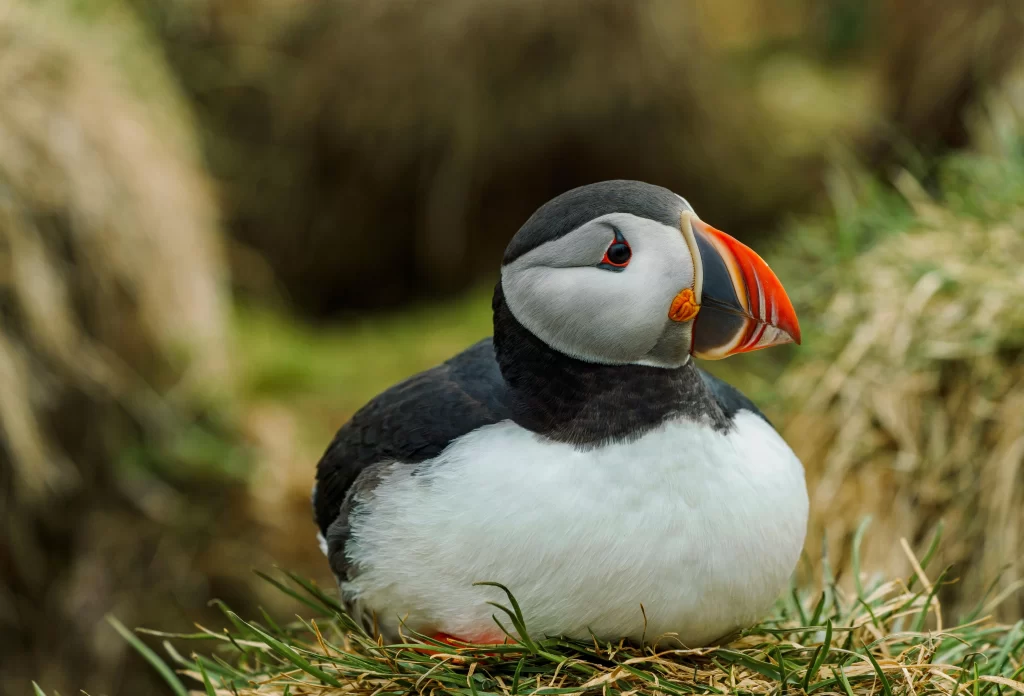
Well, puffins have evolved in the presence of several predators such as Herring Gulls, Great Black-backed Gulls, and Great Skuas. However, invasive predators tend to have the greatest impacts on puffin populations. For instance, red foxes and rats have been greatly shown to reduce puffin numbers on islands in which they’re introduced. Moreover, American minks were almost single-handedly responsible for eliminating puffins from the mainland of Iceland.
Although predators are still detrimental to puffins today, climate change is by far the most concerning obstacle that puffins face. The number of threats with which puffins must contend is alarming, and with so many challenges, how do puffins survive? How long do puffins live?
How Long Do Puffins Live
Most would not assume that puffins are very long-lived birds. Indeed, one look at the cute, goofy appearances of puffins would easily back up most people’s opinions. However, let’s take a moment to consider puffin lifespans – how long do puffins live?
Incredibly, puffins have very long lifespans as far as birds are concerned, with some puffins surpassing 30 years old! This may seem remarkable for a bird the size of a pigeon, but puffins should not be underestimated – they are much more resilient than they appear.
Considering their long lifespans, it should be no surprise that it takes baby puffins a while to reach sexual maturity. In fact, young are not sexually mature until they are anywhere from 3 to 6 years old. In the meantime, young birds will live out at sea without coming ashore once!
Although puffins will have to overcome many challenges in the coming decades, they are tough seabirds that will survive provided we make meaningful changes to preserve their populations.

